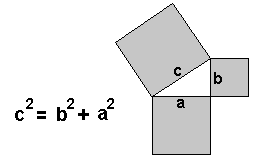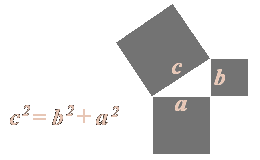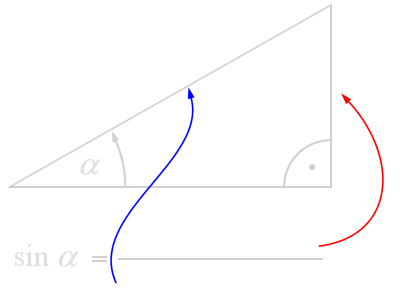Trigonometric Functions


More than 2000 years ago the ancient Greeks examined the ratios of the sides of triangles.
The most famous known equation is the “Pythagoras' Theorem”
(american english: Pieter Goras
![]() ) :
In a right-angle triangle, the square of the hypotenuse is equal
to the sum of the squares of the other two sides.
) :
In a right-angle triangle, the square of the hypotenuse is equal
to the sum of the squares of the other two sides.


At the determination of the corners of the triangle the ratio of the length of the edge opposite the examined corner to the Hypothenuse as a “sine of the angle” was determined.


The Cosine of the angle is defined as the length of the adjacent side (adjacent to the angle) divided by the hypotenuse.
The first basic fact of triangles is that in any triangle, the sum of the three angles formed inside the triangle must always equal 180°. If one angle is always 90° (a right angle) then the sum of the other two angles must always be 90°. But letting it be deduced still more relations. E. g.:
sin α = cos( 90°- α)
sin² α + cos² α = 1
